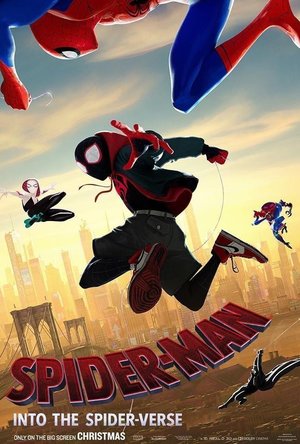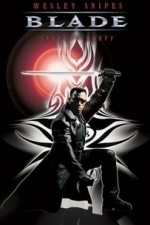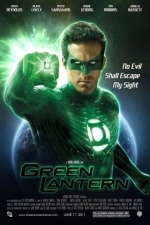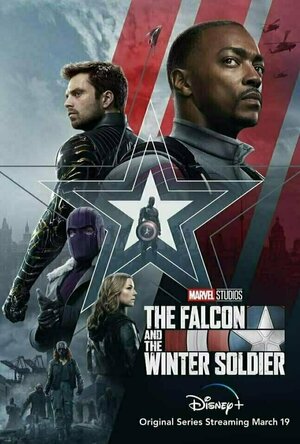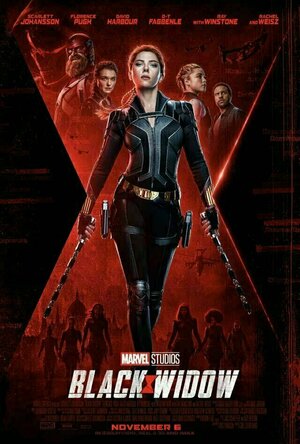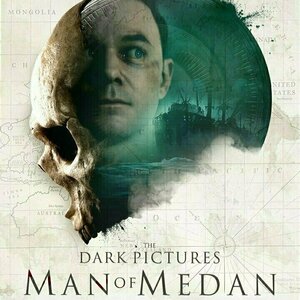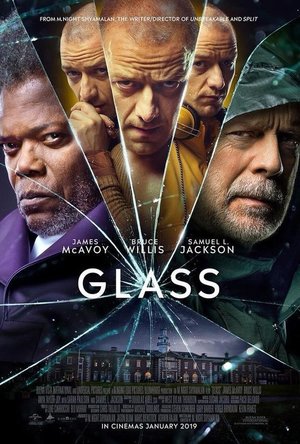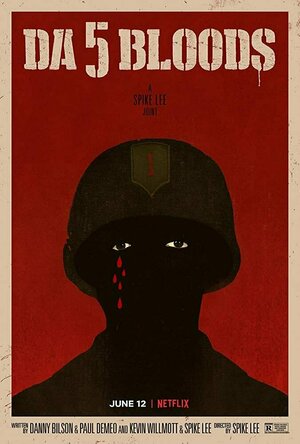Search
Search results
BankofMarquis (1832 KP) rated Spider-Man: Into the Spider-Verse (2018) in Movies
Dec 28, 2018
The first "true" comic book movie
The animated feature, SPIDERMAN: INTO THE SPIDER-VERSE, is the first, true "comic-book" film I have ever seen.
"But wait", you say, "How about the Marvel films? Or the DC Universe films? Or the X-Men or DeadPool? Aren't they Comic-Book films?".
I would have to answer - "no". At least not in the same way. All of those properties are films that are BASED on comic-books. Spider-verse, brilliantly, is a comic-book brought to life. It includes scenes that look like pages of a comic book (or graphic novel). It uses thought bubbles,sound effect words and abstract images. The characters are distorted and when other versions of the Spider-Verse are scene (not a spoiler: it's in the title), they are designed in a different graphic style.
Credit for this unique vision/type of film must start with the writers, Phil Lord (The Lego Movie) and Rodney Rothman (22 Jump Street) as well as Directors Bob Persischetti (in his Directing debut) and Rothman (again). These 3 brought to the screen a dazzling visual storytelling vision that is engrossing and interesting and (I am sure) will become richer and richer the more that this film is viewed.
This vision must have been apparent from the "get-go" as these 3 were able to load some top-notch voice talent into this film - Mahershala Ali, Hailee Steinfeld, Jake Johnson, Lily Tomlin(!), Zoe Kravitz, John Mulaney, Kathryn Hahn, Liev Schrieber, Chris Pine and good ol' Nicholas Cage all bring their "A" game to the voices, presenting (instantly) interesting, distinct characters to this interesting, distinct world.
The action of this film moves at a fast-pace, but not so fast that you get lost and the emotions of the film are strong, so the "slow" scenes are just as well paced and don't seem too slow.
I see alot of films, and it is rare when I am struck with how "unusual" a film is. And this one IS unusual - in a very good way. I was thoroughly entertained throughout and I cannot wait to see this film again to catch some of the things I missed the first time through and have a deeper and richer experience for knowing what is to come.
Letter Grade: A
9 (out of 10) stars (yes, it's that good!) and you can take this to the Bank(ofMarquis)
"But wait", you say, "How about the Marvel films? Or the DC Universe films? Or the X-Men or DeadPool? Aren't they Comic-Book films?".
I would have to answer - "no". At least not in the same way. All of those properties are films that are BASED on comic-books. Spider-verse, brilliantly, is a comic-book brought to life. It includes scenes that look like pages of a comic book (or graphic novel). It uses thought bubbles,sound effect words and abstract images. The characters are distorted and when other versions of the Spider-Verse are scene (not a spoiler: it's in the title), they are designed in a different graphic style.
Credit for this unique vision/type of film must start with the writers, Phil Lord (The Lego Movie) and Rodney Rothman (22 Jump Street) as well as Directors Bob Persischetti (in his Directing debut) and Rothman (again). These 3 brought to the screen a dazzling visual storytelling vision that is engrossing and interesting and (I am sure) will become richer and richer the more that this film is viewed.
This vision must have been apparent from the "get-go" as these 3 were able to load some top-notch voice talent into this film - Mahershala Ali, Hailee Steinfeld, Jake Johnson, Lily Tomlin(!), Zoe Kravitz, John Mulaney, Kathryn Hahn, Liev Schrieber, Chris Pine and good ol' Nicholas Cage all bring their "A" game to the voices, presenting (instantly) interesting, distinct characters to this interesting, distinct world.
The action of this film moves at a fast-pace, but not so fast that you get lost and the emotions of the film are strong, so the "slow" scenes are just as well paced and don't seem too slow.
I see alot of films, and it is rare when I am struck with how "unusual" a film is. And this one IS unusual - in a very good way. I was thoroughly entertained throughout and I cannot wait to see this film again to catch some of the things I missed the first time through and have a deeper and richer experience for knowing what is to come.
Letter Grade: A
9 (out of 10) stars (yes, it's that good!) and you can take this to the Bank(ofMarquis)
LeftSideCut (3776 KP) rated Blade (1998) in Movies
Jan 15, 2020
Blade is undeniably a product of it's time. It's the late 90s, everyone loves leather and shades, everyone loves Wesley Snipes, everyone loves dumb one liners, so the character of Blade is ripe for adaption.
But the importance of this gory action flick should absolutely not be understated. Not only was it the first proper big (ish) budget Marvel film, but it's pre dates Black Panther as the first superhero film with a black lead, and it pre dates The Punisher as the first R-rated Marvel blockbuster.
But in a pre X-Men world, comic book movies weren't a big deal at this point. I actually remember me and my friends sneakily renting and watching it (we were 10 at the time...) and none of them even knowing that Blade was even a comic book!
Here we are all these years later and the Blade trilogy is now remembered fondly (well, at least the first two are!)
Wesley Snipes is of course the star of this particular vehicle, and here, he is the most Wesley Snipes he's ever been. The cheesy one liners still come off well, and lend a nice comedic edge to the buckets of blood on display. The charm that he brings to the Blade character is the main reason why it's been hard to imagine anyone else in the role for so long (although I am here all day long for Mahershala Ali)
The other big character throughout the trilogy is Whistler, played by Kris Kristofferson, just generally being old, grumpy and badass, and is honestly the best character in the whole thing (here's hoping the MCU introduce a Whistler series on Disney+...)
Stephen Dorff plays Deacon Frost, the films villain, and he's really not much more than a generic superhero bad guy (the first of many).
The choreography and the fight scenes are pretty great, and the willingness to go hard R is what set Blade apart before comic book movies became a thing. It's sooooo bloody in parts, that it verges heavily into horror territory.
The CGI effects are utterly horrible by todays standards, but it's not used nearly enough to discredit the film too much.
Blade is a decent enough adaption of the cult Marvel series, and is a fun, gory blockbuster, but as mentioned, it's an important step in comic book cinema. Long live Blade!
But the importance of this gory action flick should absolutely not be understated. Not only was it the first proper big (ish) budget Marvel film, but it's pre dates Black Panther as the first superhero film with a black lead, and it pre dates The Punisher as the first R-rated Marvel blockbuster.
But in a pre X-Men world, comic book movies weren't a big deal at this point. I actually remember me and my friends sneakily renting and watching it (we were 10 at the time...) and none of them even knowing that Blade was even a comic book!
Here we are all these years later and the Blade trilogy is now remembered fondly (well, at least the first two are!)
Wesley Snipes is of course the star of this particular vehicle, and here, he is the most Wesley Snipes he's ever been. The cheesy one liners still come off well, and lend a nice comedic edge to the buckets of blood on display. The charm that he brings to the Blade character is the main reason why it's been hard to imagine anyone else in the role for so long (although I am here all day long for Mahershala Ali)
The other big character throughout the trilogy is Whistler, played by Kris Kristofferson, just generally being old, grumpy and badass, and is honestly the best character in the whole thing (here's hoping the MCU introduce a Whistler series on Disney+...)
Stephen Dorff plays Deacon Frost, the films villain, and he's really not much more than a generic superhero bad guy (the first of many).
The choreography and the fight scenes are pretty great, and the willingness to go hard R is what set Blade apart before comic book movies became a thing. It's sooooo bloody in parts, that it verges heavily into horror territory.
The CGI effects are utterly horrible by todays standards, but it's not used nearly enough to discredit the film too much.
Blade is a decent enough adaption of the cult Marvel series, and is a fun, gory blockbuster, but as mentioned, it's an important step in comic book cinema. Long live Blade!
JT (287 KP) rated Green Lantern (2011) in Movies
Mar 10, 2020
You feel that had The Green Lantern arrived on the scene in 2011 not competing with a host of other super hero films, such as Thor, X-Men: First Class and Captain America, it might have had a better welcome.
For me the super hero genre really is bordering a mass overkill, what with this years upcoming Avengers getting so much press its hard to turn a corner without seing one of Iron Man, Hulk or Thor adoring a billboard or poster somewhere.
So it’s a shame then that Hollywood’s Mr. Nice guy, Ryan Reynolds, was given a role so bland and pointless it was almost insulting.
Director Martin Campbell’s previous outings Casino Royale and Edge if Darkness were deep gritty affairs and he really should have carried that over into this, there was so much flamboyant colour you wondered if Joel Schumacher had some how been a part of it.
That isn’t to say that during some stages the film was not enjoyable. Test pilot Hal Jordan is given the power bestowed on him by a mysterious ring with a back story shoe horned into an opening five minute monologue, if you’re not paying attention its going to be a little confusing.
The action and special effects are very good, with the Green Lantern able to concoct a wide range of objects from his mind ranging from missile launchers, swords and even a necklace, all transferred through the power and energy of the ring.
The less so, well Reynolds is surrounded by characters that only really dip their toe into the water of the film. With thousands of Green Lanterns we only really here from two, Tomar-Re and Kilowog voiced by Geoffrey Rush and Michael Clarke Duncan respectively.
Mark Strong as Sinestro on first glance has the look of someone bound to step over to the evil side, and maybe that is to come if a sequel is due at some point.
Peter Sarsgaard’s large headed villain only serves as an entrée before Hal has to tackle the large bellowing cloud that is Parallax, an entity that thrives on sucking out the fear of its victims.
The film has its moments, but it never really has the energy that so many other super hero films have. Perhaps that fact that the back story of Hal is not nearly as exciting as say Spider-man, Batman or any of the Avengers for that matter.
For me the super hero genre really is bordering a mass overkill, what with this years upcoming Avengers getting so much press its hard to turn a corner without seing one of Iron Man, Hulk or Thor adoring a billboard or poster somewhere.
So it’s a shame then that Hollywood’s Mr. Nice guy, Ryan Reynolds, was given a role so bland and pointless it was almost insulting.
Director Martin Campbell’s previous outings Casino Royale and Edge if Darkness were deep gritty affairs and he really should have carried that over into this, there was so much flamboyant colour you wondered if Joel Schumacher had some how been a part of it.
That isn’t to say that during some stages the film was not enjoyable. Test pilot Hal Jordan is given the power bestowed on him by a mysterious ring with a back story shoe horned into an opening five minute monologue, if you’re not paying attention its going to be a little confusing.
The action and special effects are very good, with the Green Lantern able to concoct a wide range of objects from his mind ranging from missile launchers, swords and even a necklace, all transferred through the power and energy of the ring.
The less so, well Reynolds is surrounded by characters that only really dip their toe into the water of the film. With thousands of Green Lanterns we only really here from two, Tomar-Re and Kilowog voiced by Geoffrey Rush and Michael Clarke Duncan respectively.
Mark Strong as Sinestro on first glance has the look of someone bound to step over to the evil side, and maybe that is to come if a sequel is due at some point.
Peter Sarsgaard’s large headed villain only serves as an entrée before Hal has to tackle the large bellowing cloud that is Parallax, an entity that thrives on sucking out the fear of its victims.
The film has its moments, but it never really has the energy that so many other super hero films have. Perhaps that fact that the back story of Hal is not nearly as exciting as say Spider-man, Batman or any of the Avengers for that matter.
LeftSideCut (3776 KP) rated The Falcon and the Winter Soldier in TV
Apr 24, 2021 (Updated Jul 16, 2021)
Contains spoilers, click to show
On the surface, The Falcon and the Winter Soldier starts off in a familiar fashion. The first couple of episodes feel like a (welcome) return to the earlier days of the MCU, but as the story develops, it just blossoms into so much more.
The narrative mainly focuses on the two titular Avengers taking on a revolutionary group, hell bent on returning to a post snap world. It deals head first with the fallout of Thanos' devastating blow in Infinity War, and the subsequent return of the 3.5 billion people who re-materialised after Endgame, and the issues that came with them. It's good to see that Marvel Studios aren't avoiding these complicated plot points that could have potentially just been swept under the rug.
The series also develops the John Walker/U.S. Agent comic story. Its well realised and Wyatt Russell is fantastic in the role. Daniel Brühl returns as Baron Zemo after an underwhelming narrative in Civil War, and unexpectedly is plain hilarious (and finally in full costume, even if it is for one scene).
As well as all this, fans of the comics are treated to a plethora of potential future stories - The introduction of Madripoor marks the first proper acknowledgement of X-Men material. Lesser known comic characters such as Isiah Bradley, Madame Hydra, Battlestar, Batroc, and Ayo are given screentime. There's even some carrots dangled for a potential Young Avengers adaption with the appearance of Eli Bradley/Patriot (and with Kate Bishop incoming, surely this is a thing)
Perhaps most importantly, TFATWS doesn't shy away from tackling race issues, touching upon real world events, and developing them into the plot. This spills over into the future of Captain America, and what the shield represents to the black community. There are some truly powerful moments of dialogue, especially between Isiah and Sam. It's all handled respectfully, and brings new depth the MCU, as they stride into a more diverse future.
With this series, and the preceding WandaVision, this new phase for the MCU is off to an incredibly strong start, and I'm so excited to see where they take it. Between Falcon rightfully taking the reigns as Captain America, the upcoming Shang Chi movie finally adapting the martial arts corner of Marvel for the MCU, and the tantalising promise of the multiverse, it's a good time to be a Marvel fan.
The narrative mainly focuses on the two titular Avengers taking on a revolutionary group, hell bent on returning to a post snap world. It deals head first with the fallout of Thanos' devastating blow in Infinity War, and the subsequent return of the 3.5 billion people who re-materialised after Endgame, and the issues that came with them. It's good to see that Marvel Studios aren't avoiding these complicated plot points that could have potentially just been swept under the rug.
The series also develops the John Walker/U.S. Agent comic story. Its well realised and Wyatt Russell is fantastic in the role. Daniel Brühl returns as Baron Zemo after an underwhelming narrative in Civil War, and unexpectedly is plain hilarious (and finally in full costume, even if it is for one scene).
As well as all this, fans of the comics are treated to a plethora of potential future stories - The introduction of Madripoor marks the first proper acknowledgement of X-Men material. Lesser known comic characters such as Isiah Bradley, Madame Hydra, Battlestar, Batroc, and Ayo are given screentime. There's even some carrots dangled for a potential Young Avengers adaption with the appearance of Eli Bradley/Patriot (and with Kate Bishop incoming, surely this is a thing)
Perhaps most importantly, TFATWS doesn't shy away from tackling race issues, touching upon real world events, and developing them into the plot. This spills over into the future of Captain America, and what the shield represents to the black community. There are some truly powerful moments of dialogue, especially between Isiah and Sam. It's all handled respectfully, and brings new depth the MCU, as they stride into a more diverse future.
With this series, and the preceding WandaVision, this new phase for the MCU is off to an incredibly strong start, and I'm so excited to see where they take it. Between Falcon rightfully taking the reigns as Captain America, the upcoming Shang Chi movie finally adapting the martial arts corner of Marvel for the MCU, and the tantalising promise of the multiverse, it's a good time to be a Marvel fan.
LeftSideCut (3776 KP) rated Black Widow (2021) in Movies
Jul 16, 2021
It should have happened way sooner, but finally, Black Widow is here, and in short, it's pretty damn good.
There are many questions that hang over the future of the MCU and the direction that they are going. With so many cogs in motion via the various limited series on Disney+ and the impending multiverse, this first theatrical realease of phase four is a welcome and grounded change of pace, focusing on a story set in a time period we've already seen before, more specifically, set between the events of Civil War and Infinity War.
Natasha Romanoff is a rich character. Her backstory has been teased a handful of times throughout the series, but her big moment in the spotlight really gets into it. The narrative is nicely paced, fairly dialogue heavy in places, but allows the story arc space to breathe. The set pieces peppered throughout are decent, including a stupidly entertaining finale, but they never detract from the many character moments between Natasha and her "family".
The cast are absolutely solid. Scarlett Johansson is Natasha Romanoff through and through. Her presence in the MCU all this time has been a welcome one. She is bolstered by a stacked supporting cast also. Florence Pugh is great as usual, and a fine addition to the ever growing MCU roster, as is David Harbour. It's always a pleasure to see Rachel Weisz in anything. Same for Ray Winstone, even when he's playing an awful shitpiece.
A couple of minore gripes - The Taskmaster we get here is certainly not the Taskmaster comic fans may be familiar with. The way they are slipped into the narrative makes sense, but I hope the "real" Taskmaster is out there somewhere. The version we have here is parallel to the version of Deadpool we saw in X-Men Origins: Wolverine, essentially a mute henchman which is a shame.
I also wasn't a huge fan of some of the editing, especially in the more action heavy segments, but it's not enough to de-rail what is a triumphant and overdue solo effort for a truly beloved character.
If this is indeed the last time we see Scarlett Johansson's Black Widow (which I'm sceptical about, what with the multiverse incoming and all that), then it's a fitting send off.
There are many questions that hang over the future of the MCU and the direction that they are going. With so many cogs in motion via the various limited series on Disney+ and the impending multiverse, this first theatrical realease of phase four is a welcome and grounded change of pace, focusing on a story set in a time period we've already seen before, more specifically, set between the events of Civil War and Infinity War.
Natasha Romanoff is a rich character. Her backstory has been teased a handful of times throughout the series, but her big moment in the spotlight really gets into it. The narrative is nicely paced, fairly dialogue heavy in places, but allows the story arc space to breathe. The set pieces peppered throughout are decent, including a stupidly entertaining finale, but they never detract from the many character moments between Natasha and her "family".
The cast are absolutely solid. Scarlett Johansson is Natasha Romanoff through and through. Her presence in the MCU all this time has been a welcome one. She is bolstered by a stacked supporting cast also. Florence Pugh is great as usual, and a fine addition to the ever growing MCU roster, as is David Harbour. It's always a pleasure to see Rachel Weisz in anything. Same for Ray Winstone, even when he's playing an awful shitpiece.
A couple of minore gripes - The Taskmaster we get here is certainly not the Taskmaster comic fans may be familiar with. The way they are slipped into the narrative makes sense, but I hope the "real" Taskmaster is out there somewhere. The version we have here is parallel to the version of Deadpool we saw in X-Men Origins: Wolverine, essentially a mute henchman which is a shame.
I also wasn't a huge fan of some of the editing, especially in the more action heavy segments, but it's not enough to de-rail what is a triumphant and overdue solo effort for a truly beloved character.
If this is indeed the last time we see Scarlett Johansson's Black Widow (which I'm sceptical about, what with the multiverse incoming and all that), then it's a fitting send off.

Shakespeare’s Sonnets
Entertainment and Education
App
A masterly app...As accessible as it is scholarly, it’s an extraordinary achievement, that brings...
Sarah (7800 KP) rated the PlayStation 4 version of The Dark Pictures Anthology: Man of Medan in Video Games
May 29, 2020
A thrilling play
Games like this dont appeal to everyone. It's not full of action, beating people up or a massive open world full of free play. It also doesnt drag on for 40+ hours. However for people like me who struggle with those type of games, Man of Medan is a breath of fresh air.
I'd previously played and rather enjoyed Until Dawn, and I'm pleased to say this follows much in the same vein although it's probably a much shorter story. Graphically this is very impressive looking and like Until Dawn, they've thrown in yet another recognisable face (this time it's Shawn Ashmore aka Bobby from X-Men). The characters look amazing and the setting too. The story too is a good and interesting one, although it does feel a little similar to other stories (like Ghost Ship) and may be a tad predictable. We worked out what was going on well before the third act. That said, I still found it to be absolutely terrifying. Playing a game like this is a lot scarier than watching any horror film!
The gameplay works really well. The fact that you can play this with friends, either online or couch co-op, adds another fun dimension to it all. The decision making also means that there are so many different endings and outcomes (I believe there's over 60 possible ways for the characters to die) that the replayability is surprisingly better than you'd expect. Admittedly it would probably get a bit tedious trying to uncover absolutely everything and all possible outcomes, but playing a few times over is still enjoyable.
The only downsides are the lag and load issues. Most likely due to the decision making process and actions, there is a noticeable lag in some of the cut scenes and movements which is bearable but can noticeably affect the smooth running of the game. There's also the characters themselves. They look great, but they're very cliched and have very little personality or interest too them. And the script is a little cheesy at times which only further impacts with a slight dislike of the characters. Part of me actually wanted to kill them all off...
Overall a great story and an interesting game to play, if you're looking for something a little different.
I'd previously played and rather enjoyed Until Dawn, and I'm pleased to say this follows much in the same vein although it's probably a much shorter story. Graphically this is very impressive looking and like Until Dawn, they've thrown in yet another recognisable face (this time it's Shawn Ashmore aka Bobby from X-Men). The characters look amazing and the setting too. The story too is a good and interesting one, although it does feel a little similar to other stories (like Ghost Ship) and may be a tad predictable. We worked out what was going on well before the third act. That said, I still found it to be absolutely terrifying. Playing a game like this is a lot scarier than watching any horror film!
The gameplay works really well. The fact that you can play this with friends, either online or couch co-op, adds another fun dimension to it all. The decision making also means that there are so many different endings and outcomes (I believe there's over 60 possible ways for the characters to die) that the replayability is surprisingly better than you'd expect. Admittedly it would probably get a bit tedious trying to uncover absolutely everything and all possible outcomes, but playing a few times over is still enjoyable.
The only downsides are the lag and load issues. Most likely due to the decision making process and actions, there is a noticeable lag in some of the cut scenes and movements which is bearable but can noticeably affect the smooth running of the game. There's also the characters themselves. They look great, but they're very cliched and have very little personality or interest too them. And the script is a little cheesy at times which only further impacts with a slight dislike of the characters. Part of me actually wanted to kill them all off...
Overall a great story and an interesting game to play, if you're looking for something a little different.

Horror Stories: A Memoir by Liz Phair
Book
From the two-time Grammy-nominated singer-songwriter behind the groundbreaking album Exile in...
Movie Metropolis (309 KP) rated Glass (2019) in Movies
Jun 10, 2019
An ambitious but flawed finale
M. Night Shyamalan is back behind the camera! Quick, run! Joking aside, Shyamalan’s career is as convoluted as his signature third-act twists. Starting off with the fabulous The Sixth Sense and then almost derailing his career with catastrophic failures like The Happening, After Earth and dare I mention it, The Last Airbender, it appeared we had all but lost that once promising directorial flair.
Thankfully in 2016’s Split, Shyamalan returned to form somewhat with a nicely paced, tense thriller starring James McAvoy as Kevin, a guy with multiple personality disorder. Of course, the infamous twist, possibly Shyamalan’s best, that this film was set in the same universe as the fabulous Unbreakable was almost too much to handle.
Fast-forward three years and Glass is the film that rounds out the surprise trilogy, bringing together McAvoy, Bruce Willis and Samuel L Jackson for the mother of all showdowns. Or that’s what the trailers would have you believe. But what’s the finished product like?
Three weeks after the conclusion of Split, Glass finds Bruce Willis’ David Dunn pursuing James McAvoy’s superhuman figure of The Beast in a series of escalating encounters, while the shadowy presence of Elijah Price (Samuel L Jackson) emerges as an orchestrator who holds secrets critical to both men. Sandwiched in between this is Sarah Paulson’s Dr Ellie Staple who desperately wants to prove that these men simply hold delusions of grandeur.
As a rule, trilogy closers generally tend to the weakest of the three films with Spider-Man 3, Return of the Jedi and X-Men: Apocalypse cementing my point and Glass unfortunately follows a similar pattern. While by no means a bad film, Shyamalan desperately tries to add too many plot threads into the mix at the end resulting in a messy climax that trips all over itself.
Thankfully, the first act, and the majority of the second live up to expectations. James McAvoy is absolutely exceptional as Kevin and his multiple personalities. Switching between them at the flash of a light, he is staggering to watch and is the highlight in a film that for the most part, gets the best out of its stars. Samuel L Jackson and Sarah Paulson are great with the former looking like he’s having an absolute blast reprising a role that’s been dormant for 19 years.
The less said about Bruce Willis the better. He seems to be sleepwalking through the entire film, so it’s probably for the best that he appears fleetingly every now and then as this is very much McAvoy’s film.
Glass is a film that is both longer and weaker than its two predecessors but can still get by on its own merits thanks to a stunning performance by James McAvoy
The script is typical Shyamalan. It’s clunky, filled with overly expositional dialogue and sometimes downright jarring, but the intriguing premise allows you to overlook this more often than not. There are some nice touches as Sarah Paulson’s character tries to explain away the powers of the main trio, making them and us as the audience doubt their superhuman abilities.
Those expecting a film packed with action will be disappointed. Glass is very much a character piece. The action that is there is well-filmed and realistic considering the film’s incredibly small budget, but it’s limited to the beginning and end of the movie, though the finale is such a mess that it’s really not worth mentioning.
Much of Glass takes place within the Raven Hill Memorial Hospital and follows Paulson’s daily studies of the trio and while this does dampen the pacing somewhat, it’s a refreshing change to the action-packed blockbusters that we have become accustomed to in the genre.
When it comes to cinematography, again, it’s typical Shyamalan. Long-tracking shots, super close-ups and peculiar camera angles are all present and correct. In Split, the impact of his unusual camerawork wasn’t too grating, but here it creates quite the distraction. There’s also another Shyamalan staple: the director’s cameo. The one in Glass is overly long and completely unnecessary, but it’s something we’ve come to expect over the last couple of decades.
Overall, Glass is a film that is both longer and weaker than its two predecessors but can still get by on its own merits thanks to a stunning performance by James McAvoy, the class brought by Samuel L Jackson and Sarah Paulson and a great sense of ambition. Unfortunately, budgetary restraints have resulted in a film that is subtle to the point of being dull and while praise should be given for effort, Glass proves to be just a little underwhelming.
https://moviemetropolis.net/2019/01/19/glass-review-an-ambitious-but-flawed-finale/
Thankfully in 2016’s Split, Shyamalan returned to form somewhat with a nicely paced, tense thriller starring James McAvoy as Kevin, a guy with multiple personality disorder. Of course, the infamous twist, possibly Shyamalan’s best, that this film was set in the same universe as the fabulous Unbreakable was almost too much to handle.
Fast-forward three years and Glass is the film that rounds out the surprise trilogy, bringing together McAvoy, Bruce Willis and Samuel L Jackson for the mother of all showdowns. Or that’s what the trailers would have you believe. But what’s the finished product like?
Three weeks after the conclusion of Split, Glass finds Bruce Willis’ David Dunn pursuing James McAvoy’s superhuman figure of The Beast in a series of escalating encounters, while the shadowy presence of Elijah Price (Samuel L Jackson) emerges as an orchestrator who holds secrets critical to both men. Sandwiched in between this is Sarah Paulson’s Dr Ellie Staple who desperately wants to prove that these men simply hold delusions of grandeur.
As a rule, trilogy closers generally tend to the weakest of the three films with Spider-Man 3, Return of the Jedi and X-Men: Apocalypse cementing my point and Glass unfortunately follows a similar pattern. While by no means a bad film, Shyamalan desperately tries to add too many plot threads into the mix at the end resulting in a messy climax that trips all over itself.
Thankfully, the first act, and the majority of the second live up to expectations. James McAvoy is absolutely exceptional as Kevin and his multiple personalities. Switching between them at the flash of a light, he is staggering to watch and is the highlight in a film that for the most part, gets the best out of its stars. Samuel L Jackson and Sarah Paulson are great with the former looking like he’s having an absolute blast reprising a role that’s been dormant for 19 years.
The less said about Bruce Willis the better. He seems to be sleepwalking through the entire film, so it’s probably for the best that he appears fleetingly every now and then as this is very much McAvoy’s film.
Glass is a film that is both longer and weaker than its two predecessors but can still get by on its own merits thanks to a stunning performance by James McAvoy
The script is typical Shyamalan. It’s clunky, filled with overly expositional dialogue and sometimes downright jarring, but the intriguing premise allows you to overlook this more often than not. There are some nice touches as Sarah Paulson’s character tries to explain away the powers of the main trio, making them and us as the audience doubt their superhuman abilities.
Those expecting a film packed with action will be disappointed. Glass is very much a character piece. The action that is there is well-filmed and realistic considering the film’s incredibly small budget, but it’s limited to the beginning and end of the movie, though the finale is such a mess that it’s really not worth mentioning.
Much of Glass takes place within the Raven Hill Memorial Hospital and follows Paulson’s daily studies of the trio and while this does dampen the pacing somewhat, it’s a refreshing change to the action-packed blockbusters that we have become accustomed to in the genre.
When it comes to cinematography, again, it’s typical Shyamalan. Long-tracking shots, super close-ups and peculiar camera angles are all present and correct. In Split, the impact of his unusual camerawork wasn’t too grating, but here it creates quite the distraction. There’s also another Shyamalan staple: the director’s cameo. The one in Glass is overly long and completely unnecessary, but it’s something we’ve come to expect over the last couple of decades.
Overall, Glass is a film that is both longer and weaker than its two predecessors but can still get by on its own merits thanks to a stunning performance by James McAvoy, the class brought by Samuel L Jackson and Sarah Paulson and a great sense of ambition. Unfortunately, budgetary restraints have resulted in a film that is subtle to the point of being dull and while praise should be given for effort, Glass proves to be just a little underwhelming.
https://moviemetropolis.net/2019/01/19/glass-review-an-ambitious-but-flawed-finale/
BankofMarquis (1832 KP) rated Da 5 Bloods (2020) in Movies
Jun 19, 2020
Delroy Lindo shines in a mostly good film
Over the years, I have become a fan of Spike Lee. I think he has a singular vision as a filmmaker with his films putting a spotlight on the black experience and the prejudices and injustices that prevail.
DA 5 BLOODS - Lee's Vietnam War movie - is no exception.
Set in present(ish) day and in the memories of the main characters from their time "in country", DA 5 BLOODS tells the tale of 4 Vietnam Veterans who return to find the body of their squadron leader - and the gold that they buried under his body.
Part Vietnam war flick, part gold heist (and the cost of this theft on the hearts and minds of the participants) and part reflection on the treatment of the black soldiers, Lee reaches high to combine 3 separate - and complex - films into one (any one of which could have been a film of their own) and it is here that this films succeeds - and fails. For this film is at moments riveting, at moments unflinching and hard to watch, at moments confusing and at moments...surprisingly... dull. Spike had a lot of movie to tell and he took 2 and a 1/2 hours to tell it. He would have been better suited to cut some of this down to a more palatable 2-ish hour length. The film bogs down on itself at times.
But when it crackles - it crackles. Especially when the 4 veteran soldiers interact with each other. Led by the great Delroy Lindo (TV's THE GOOD FIGHT). I hope that this film gets a theatrical release sometime (to make it eligible for the Oscars) for Lindo's portrayal of MAGA Hat wearing, PTSD suffering Paul is powerful and captivating. I was riveted by his performance and I was willing to follow him to the ends of the Earth. Also standing out is Clarke Peters as Otis - the heart and soul of this group and Norm Lewis, the pigeon-toed Eddie who has a secret that he is hiding. Both of these characters shine at moments - but are not in the spotlight nearly often enough. The same can be said for Isaih Whitlock Jr as Melvin, a character that is undeserved until the end and by then I felt myself wanting more of him. (Side Note: Lee named these characters after members of THE TEMPTATIONS).
Lee makes an interesting choice in the flashback scenes of the war. Instead of casting younger actors or spending the $$ on "de-aging" the actors (Lee would say that the de-aging was "cost prohibitive"), Lee chooses to have these old guys just play their younger versions of themselves just as they are now, claiming that these are not flashbacks, but "memories" of these soldiers - and I gotta admit that this tactic works very, very well - especially when these 4 older gentlemen are in the Vietnam War scenes with their Platoon Leader played, charismatically, by the much younger Chadwick Boseman. His character is killed in action and since these scenes are memories, it works well that he is younger (he never got a chance to grow old) while all the others are older. Boseman has a an attraction to him that helps the audience buy into the fact that all these years later these 4 men still hold him front and center in their memories. Unfortunately, the combat scenes looks to me like they were done on a shoe-string budget, so Lee has to use "tricks" to pull these scenes off and these tricks bring these scenes down a peg.
As I've stated, this film is really 3 films in one and the effects of the gold on the men is the most interesting part of this film for me, it touches on the desires of the human soul and brings some of the strongest acting and emotions.
This being a Spike Lee joint, this film is peppered with scenes from the black experience - from Martin Luther KIng to Malcom X to "Hanoi Hannah" telling the black troops that their country is abandoning them. These are important events in the lives and psyche of these men (and African Americans) and Mr. Lee is uniquely positioned to bring the attention of the public to these events, and he does it well.
DA 5 BLOODS in now streaming on Netflix.
Letter Grade: A-
8 stars (out of 10) and you can take that to the Bank(ofMarquis)
DA 5 BLOODS - Lee's Vietnam War movie - is no exception.
Set in present(ish) day and in the memories of the main characters from their time "in country", DA 5 BLOODS tells the tale of 4 Vietnam Veterans who return to find the body of their squadron leader - and the gold that they buried under his body.
Part Vietnam war flick, part gold heist (and the cost of this theft on the hearts and minds of the participants) and part reflection on the treatment of the black soldiers, Lee reaches high to combine 3 separate - and complex - films into one (any one of which could have been a film of their own) and it is here that this films succeeds - and fails. For this film is at moments riveting, at moments unflinching and hard to watch, at moments confusing and at moments...surprisingly... dull. Spike had a lot of movie to tell and he took 2 and a 1/2 hours to tell it. He would have been better suited to cut some of this down to a more palatable 2-ish hour length. The film bogs down on itself at times.
But when it crackles - it crackles. Especially when the 4 veteran soldiers interact with each other. Led by the great Delroy Lindo (TV's THE GOOD FIGHT). I hope that this film gets a theatrical release sometime (to make it eligible for the Oscars) for Lindo's portrayal of MAGA Hat wearing, PTSD suffering Paul is powerful and captivating. I was riveted by his performance and I was willing to follow him to the ends of the Earth. Also standing out is Clarke Peters as Otis - the heart and soul of this group and Norm Lewis, the pigeon-toed Eddie who has a secret that he is hiding. Both of these characters shine at moments - but are not in the spotlight nearly often enough. The same can be said for Isaih Whitlock Jr as Melvin, a character that is undeserved until the end and by then I felt myself wanting more of him. (Side Note: Lee named these characters after members of THE TEMPTATIONS).
Lee makes an interesting choice in the flashback scenes of the war. Instead of casting younger actors or spending the $$ on "de-aging" the actors (Lee would say that the de-aging was "cost prohibitive"), Lee chooses to have these old guys just play their younger versions of themselves just as they are now, claiming that these are not flashbacks, but "memories" of these soldiers - and I gotta admit that this tactic works very, very well - especially when these 4 older gentlemen are in the Vietnam War scenes with their Platoon Leader played, charismatically, by the much younger Chadwick Boseman. His character is killed in action and since these scenes are memories, it works well that he is younger (he never got a chance to grow old) while all the others are older. Boseman has a an attraction to him that helps the audience buy into the fact that all these years later these 4 men still hold him front and center in their memories. Unfortunately, the combat scenes looks to me like they were done on a shoe-string budget, so Lee has to use "tricks" to pull these scenes off and these tricks bring these scenes down a peg.
As I've stated, this film is really 3 films in one and the effects of the gold on the men is the most interesting part of this film for me, it touches on the desires of the human soul and brings some of the strongest acting and emotions.
This being a Spike Lee joint, this film is peppered with scenes from the black experience - from Martin Luther KIng to Malcom X to "Hanoi Hannah" telling the black troops that their country is abandoning them. These are important events in the lives and psyche of these men (and African Americans) and Mr. Lee is uniquely positioned to bring the attention of the public to these events, and he does it well.
DA 5 BLOODS in now streaming on Netflix.
Letter Grade: A-
8 stars (out of 10) and you can take that to the Bank(ofMarquis)
